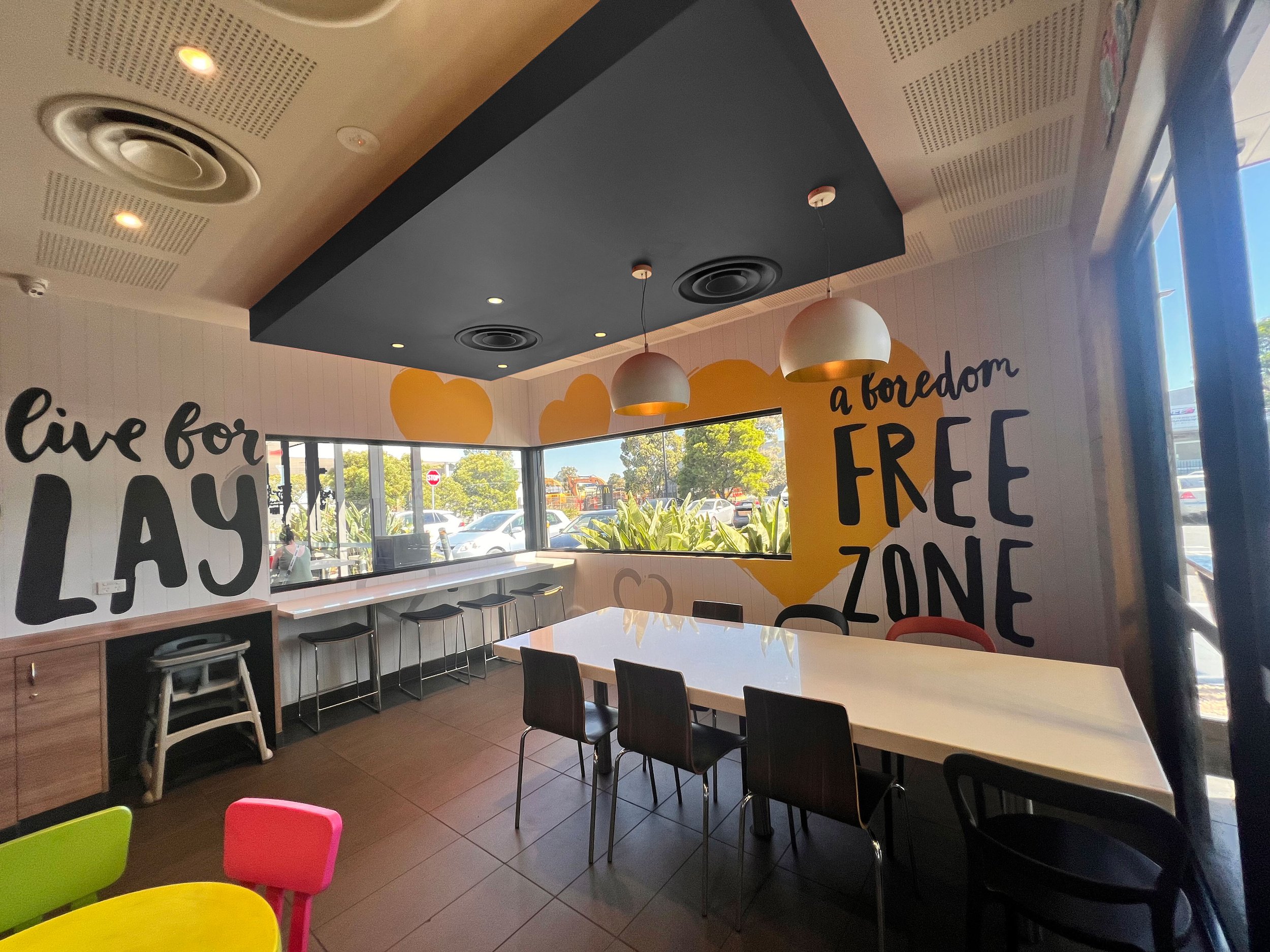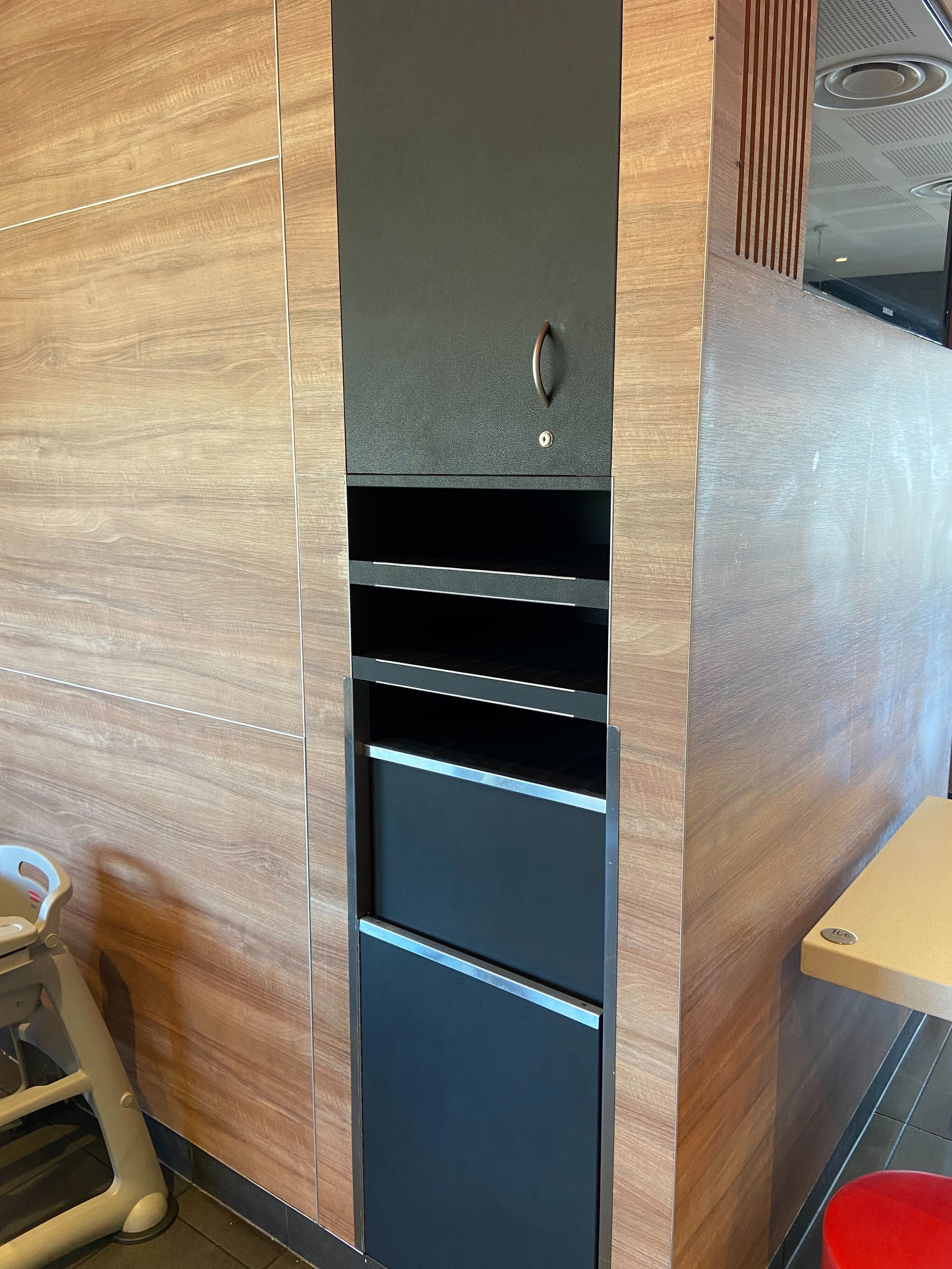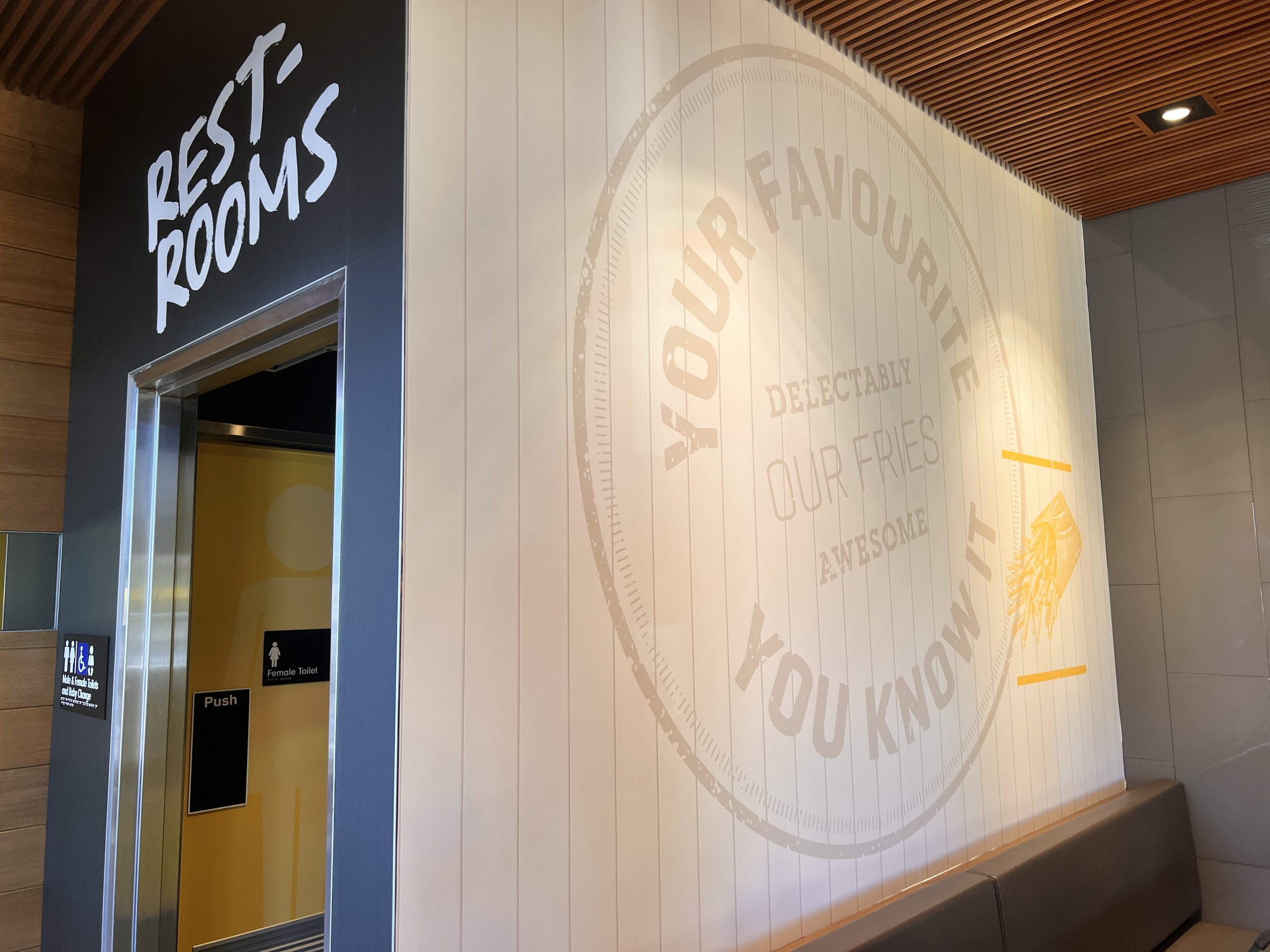
McDonald's Laverton North Restyling Project
Client | McDonalds Location | Laverton North
Application | Printed Graphics, 2D Architectural Film & Braille
Thrilled to share the success of our recent McDonald's Laverton North restyling project! In our commitment to sustainability, Rob Batty and our dedicated team have successfully implemented an innovative and cost-effective approach while utilizing eco-friendly products.
By incorporating printed graphics, applying resurfacing films (2D Architectural Film) to bins, and adhering to McDonald's brand specifications, we've achieved an effective and aesthetically pleasing fitout.
The final outcome is a modern, vibrant, and uplifting space that not only meets our client's design expectations but also aligns with our dedication to sustainability. We're proud to offer a space that not only captivates but also contributes to a positive environmental impact for both customers and crew.
See below how TD Restyled McDonalds Laverton North
-

Printed Wall Graphics
Tint Design implemented a creative solution by enhancing the McDonald’s Laverton North with customizable printed wall graphics. Whether it's branding elements, stunning imagery, or informational displays, our printed solutions transformed this environment into a modern, vibrant, and uplifting space.
-

2D Architectural Film
A cutting-edge solution for transforming surfaces. Applied to the bin and tray returns area, this film transformed this high traffic area to better blend with the aesthetics of the Laverton North store.
-

Braille Signage
Our extensive skill set, meant that TD was able to design and manufacture braille signage for the rest rooms. Precision-crafted with tactile Braille characters and clear visual elements, our signage solutions combine compliance with design.
Key Sustainable Benefits of 2D Architectual Films
-
Unlike traditional renovation methods that might require the removal and replacement of existing surfaces, 2D Architectural Film can be applied directly to existing structures, reducing the need for new materials and minimizing waste.
-
The manufacturing process of 2D Architectural Film often requires less energy compared to producing new construction materials. Additionally, the film can enhance insulation properties, contributing to improved energy efficiency in buildings.
-
The application of 2D Architectural Film produces fewer pollutants and generates less environmental impact compared to more invasive renovation processes. This aligns with sustainable practices and reduces the carbon footprint of a project.
-
2D Architectural Film is designed to be highly durable, offering a long lifespan. This durability reduces the need for frequent replacements, further minimizing the environmental impact associated with the production and disposal of building materials.
-
The flexibility and versatility of 2D Architectural Film mean it can be easily removed or replaced without causing damage to the underlying surfaces. This reusability contributes to a circular economy approach, promoting a more sustainable use of resources.
Styling with McDonald’s SoHo Pallet:
Using elements of McDonald’s SoHo Pallet, Tint Design had the task of styling the restaurant with a mix of printed graphics, architectural restyling films, as well as providing overall colour pallet recommendations.
Manufactured and installed entirely by the TD team, the store has a refreshed party room and dining room, with reskinned tray returns and bins (featuring our exclusive new 2D Architectural Film).
The scope also included modernisation of the restrooms and a refreshed McCafe featuring printed tiles.
The result is a modern, bright, and uplifting as well as sustainable space for customers and crew to all enjoy!









